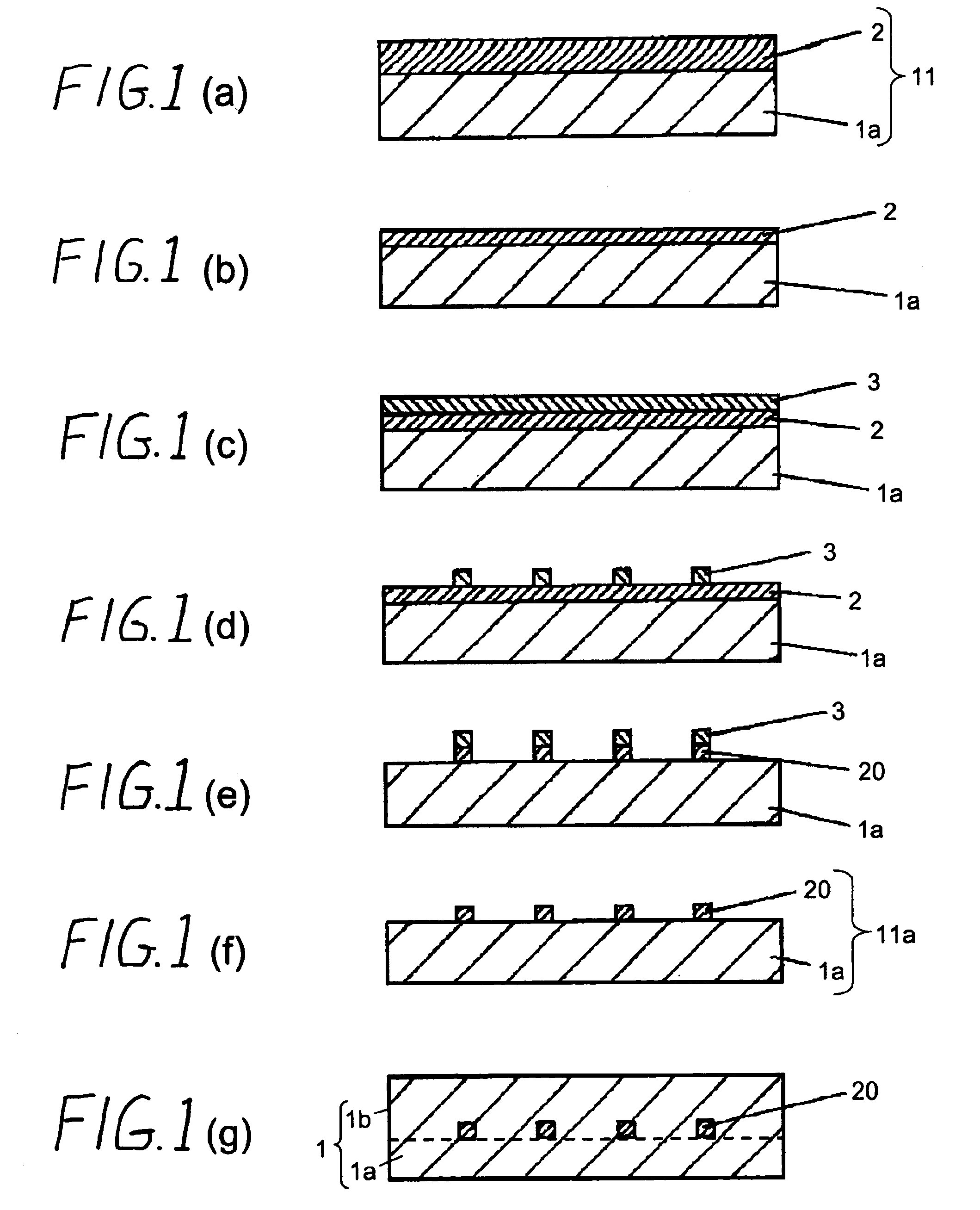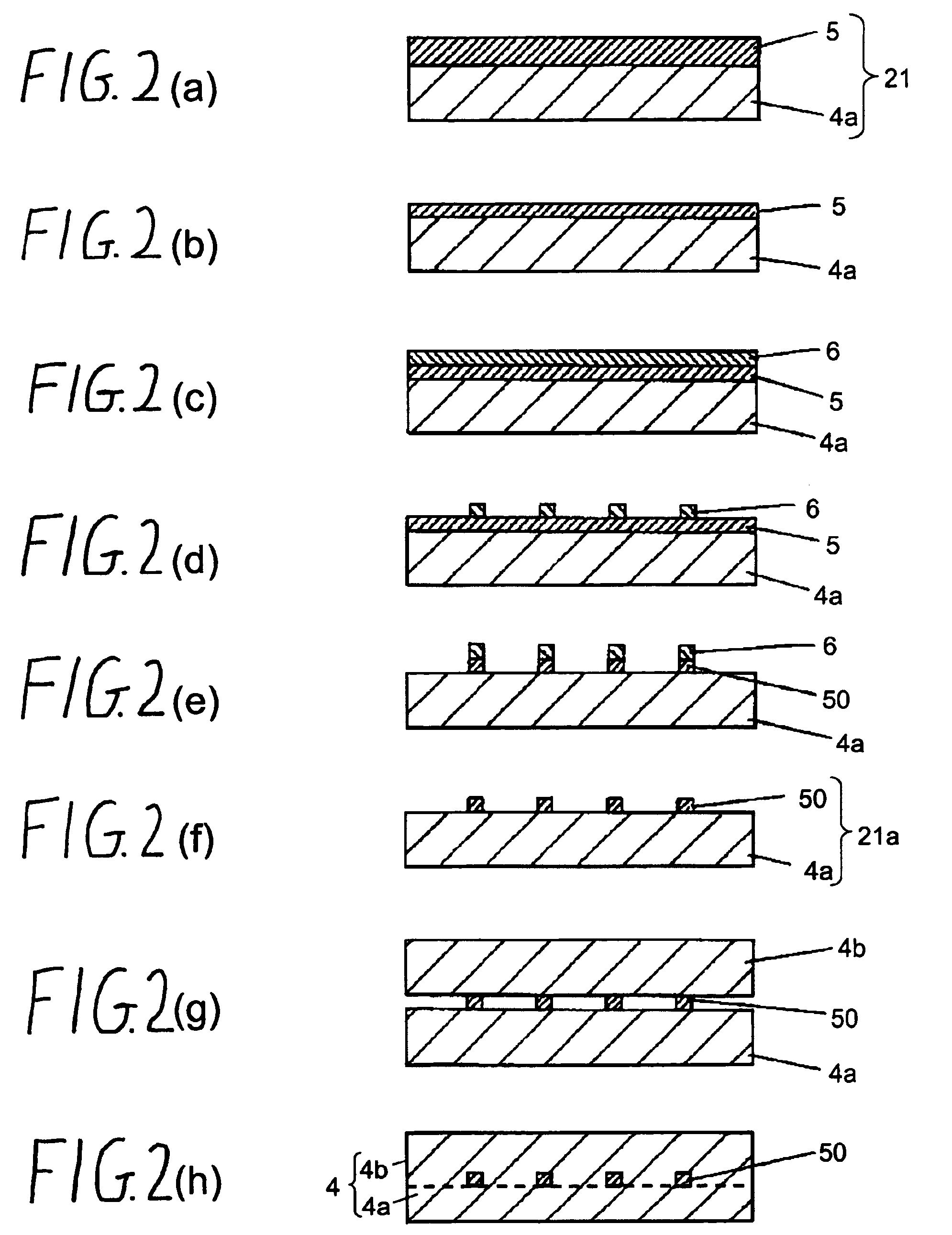Optical waveguide and method for fabricating the same
a technology of optical waveguides and core segments, applied in the field of optical components, can solve the problems of long processing time, uneven distribution of dopant in a direction, and long time-consuming, and achieve the effects of easy production of optical waveguides, good mass production productivity, and constant precision in the shape of core segments
- Summary
- Abstract
- Description
- Claims
- Application Information
AI Technical Summary
Benefits of technology
Problems solved by technology
Method used
Image
Examples
first exemplary embodiment
[0028](First Exemplary Embodiment)
[0029]FIGS. 1(a)-(g) illustrates processing diagrams for manufacturing an optical waveguide according to the first exemplary embodiment of the present invention. A circular shape fluorine crown glass of 3 inches in diameter, as a substrate constituting lower cladding layer 1a, and a borosilicate crown glass of the same shape, as another substrate constituting core layer 2 were directly bonded together. FIG. 1(a) shows an appearance of the bonded state. The direct bonding is made in the following manner. First, one surface of each of the glass substrates is optically polished to such an extent that it becomes 1 nm in arithmetic mean surface roughness (Ra) and 1 μm in flatness. After that, these glass substrates are rinsed to a level of cleanliness that a contact angle of water to these glass substrates is 5 degrees or less. Next, after the polished surfaces of these glass substrates are abutted and pressed against each other, they are heat-treated at...
second exemplary embodiment
[0046](Second Exemplary Embodiment)
[0047]FIGS. 2(a)-(h) illustrates processing diagrams for manufacturing an optical waveguide according to the second exemplary embodiment of the present invention. A circular shape fluorine crown glass of 3 inches in diameter, as a substrate constituting lower cladding layer 4a, and another fluorine crown glass of the same shape, as a substrate constituting core layer 5 were put together by direct bonding. FIG. 2(a) shows an appearance of the bonded state. The method of making the direct bonding is the same as that described in the first exemplary embodiment, and details are therefore skipped. Bonding directly the core layer 5 and the lower cladding layer 4a obtains bonded substrate 21 in which the core layer 5 and the lower cladding layer 4a are Integrated into one body.
[0048]Next, a surface of the core layer 5 is ground and polished until a thickness of the core layer 5 becomes 5 to 7 μm, as shown in FIG. 2(b). The core layer 5 is then coated with...
PUM
| Property | Measurement | Unit |
|---|---|---|
| Ra | aaaaa | aaaaa |
| mean surface roughness | aaaaa | aaaaa |
| arithmetic mean surface roughness | aaaaa | aaaaa |
Abstract
Description
Claims
Application Information
 Login to View More
Login to View More - R&D
- Intellectual Property
- Life Sciences
- Materials
- Tech Scout
- Unparalleled Data Quality
- Higher Quality Content
- 60% Fewer Hallucinations
Browse by: Latest US Patents, China's latest patents, Technical Efficacy Thesaurus, Application Domain, Technology Topic, Popular Technical Reports.
© 2025 PatSnap. All rights reserved.Legal|Privacy policy|Modern Slavery Act Transparency Statement|Sitemap|About US| Contact US: help@patsnap.com



